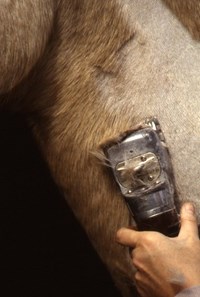The horse hair covering your jacket and truck seats is a clear sign that shedding season has finally arrived, so you can put away your body clippers and let nature do the messy job. But don’t just toss your clippers back into your tack trunk; improperly stored clippers aren’t likely to work well, or at all, come next winter. Instead, take some time to do basic maintenance:

• Remove the blades and clear out as much hair and gunk as possible. Remember to separate the larger “comb” from the cutting blade for thorough cleaning. Some clippers come with a small brush for this purpose, but a toothbrush will also work.
• Wash the blades with an appropriate cleaning solution. Most clipper manufacturers sell a brand of wash; use one of those rather than a homemade preparation or kerosene, which could damage the blades or cause them to rust.
• If necessary, send your blades out to be sharpened. Clipping several horses or even one with a particularly dirty coat may dull clipper blades. Not only do dull blades not clip as well, but they pull on hair as they work, which can make a horse uncomfortable. Most clipper manufacturers have their own service centers or can recommend a repair center that sharpens blades. Blades that are rusty or have broken teeth will need to be replaced.
• Oil the blades with blade oil (not the spray lubricant you use while clipping) and store them in an airtight plastic baggie. Again, it’s best to use an oil made by a clipper manufacturer rather than a homemade preparation. Place the baggie with the oiled blades in a plastic container so they are less likely to be damaged in storage. If your clippers came with more detailed instructions on blade storage, follow those.
• Store the cord carefully. First, inspect the cord for damage. If you find any fraying, you’ll want to get it repaired now before the rush in the fall. If it appears to be in good shape, loop it back onto itself and secure it with a twist tie. Do not wrap the cord around the handle of the clipper; doing so can damage the internal connections.
This article first appeared in EQUUS issue #461, March 2016.








